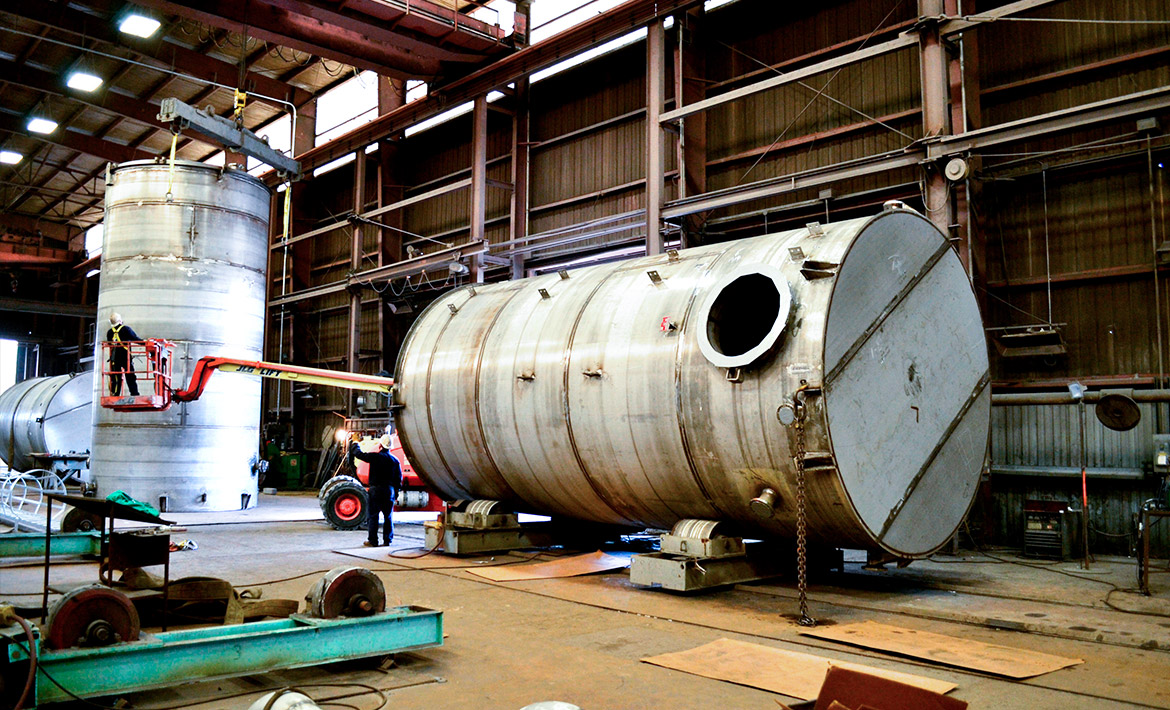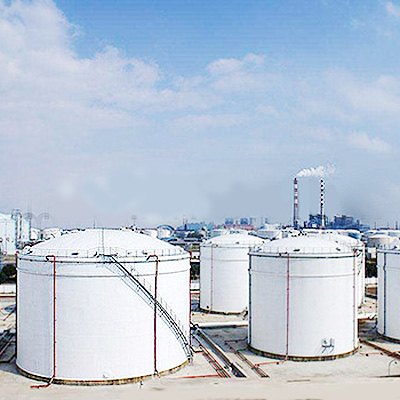How to Perform API 650 Welding Inspection Properly for Superior Quality Results
A Detailed Check Out the Installment Process of Welding Inspection Techniques
Welding assessment is a vital procedure that assures structural integrity and safety. The setup of assessment methods includes several organized steps, each indispensable to attaining trusted results. From preparation and tool choice to conducting non-destructive and visual tests, each stage demands cautious focus. Recognizing these procedures can substantially boost quality control in welding tasks. What challenges arise in executing these strategies, and exactly how can they be efficiently dealt with?
Understanding the Importance of Welding Assessment
Welding assessment is an important part of guaranteeing architectural integrity and safety and security in construction and production processes. This method entails reviewing welded joints for problems, making sure that they satisfy particular requirements and laws. By methodically evaluating weld top quality, inspectors can recognize issues such as cracks, gaps, and incomplete fusion, which can compromise the toughness and durability of frameworks.
The significance of welding assessment expands past instant safety worries; it assists avoid pricey failings and prospective hazards in the lengthy term. Reliable inspection strategies foster compliance with industry criteria, consequently enhancing the total dependability of welded elements. In enhancement, a durable examination process contributes to keeping the track record of contractors and producers, as it assures customers of the quality of their jobs. Ultimately, understanding the relevance of welding examination is critical for promoting secure construction methods and making sure the longevity of vital facilities and products.
Picking the Right Equipment for Inspection
When picking the appropriate devices for evaluation, it is important to consider the specific demands of the welding procedure and the products included. Various examination approaches, such as visual, ultrasonic, and radiographic testing, demand unique tools customized to their special demands. For aesthetic evaluations, tools like multiplying calipers and glasses are important for examining weld top quality. Ultrasonic screening needs specialized tools qualified of transferring and getting audio waves to discover interior imperfections. Radiographic testing, on the other hand, utilizes X-ray or gamma-ray resources alongside sensitive film or electronic detectors to expose variances.
Furthermore, individual protective devices (PPE) is vital to assure the safety of inspectors throughout examinations. Selecting the right devices not just improves the precision of inspections however likewise adds to the overall honesty and safety of the welding task. Subsequently, a thorough understanding of available tools and their applications is crucial for efficient welding assessment.
Getting ready for the Evaluation Refine
Prior to launching the assessment process, it is vital to develop an extensive plan that outlines the range and goals of the analysis. This strategy should include details criteria that specify what constitutes acceptable top quality in the welding job being inspected. Identifying the pertinent codes and standards is important, as they will assist the assessment standards and methodologies.
Additionally, personnel entailed in the assessment has to be properly trained and licensed in welding evaluation methods to guarantee reliability and accuracy. A list can be beneficial in organizing the numerous facets of the examination, varying from tools readiness to ecological problems that might influence the assessment.

Logistical considerations such as organizing, readily available resources, and communication between group members need to be dealt with. By preparing methodically, assessors can boost the efficiency of the assessment and guarantee that all essential elements are properly considered prior to waging the assessment itself.
Performing Aesthetic Assessments

Conducting aesthetic assessments is an important step in the welding evaluation procedure, calling for cautious prep work to assure effective assessment. Inspectors must know with key issue indicators that can indicate possible issues in weld quality. By concentrating on these elements, one can boost the total dependability of the assessment outcomes.
Planning For Visual Inspection
Visual inspection serves as an essential primary step in the welding examination process, guaranteeing that any prospective defects are identified early (API 650 Welding Inspection). Correct preparation is important for efficient aesthetic assessment. Inspectors ought to start by reviewing relevant documents, consisting of welding procedures and specs, to recognize the job demands. They must gather necessary devices, such as magnifying glasses, flashlights, and proper personal safety equipment (PPE) A detailed evaluation of the assessment location is critical; examiners ought to verify it is totally free and tidy of blockages. In addition, it is necessary to establish optimal illumination conditions to boost exposure of welds. By taking these primary actions, examiners visit this website can produce a setting favorable to determining disparities and assuring the stability of the bonded structures
Secret Flaw Indicators
A thorough understanding of key flaw indicators is essential throughout visual assessments to guarantee the high quality and safety and security of bonded joints. Examiners must concentrate on certain indications such as fractures, porosity, damages, and insufficient blend. Fractures may look why not find out more like sharp lines and can endanger architectural honesty. Porosity materializes as tiny holes that can damage weld strength. Undercuts, which are grooves along the weld edge, can lead to tension concentration. Incomplete fusion indicates that the weld metal did not effectively bond with the base material, leading to a weak joint. By methodically determining these problems, examiners can ascertain conformity with industry requirements and improve the overall reliability of welded frameworks, inevitably contributing to much safer operational conditions.
Applying Non-Destructive Checking Methods

Many non-destructive testing (NDT) methods are important to guaranteeing the honesty of bonded structures without endangering their performance. These methods enable inspectors to examine weld high quality and find issues without causing damages to the materials being evaluated. Common NDT strategies include ultrasonic screening, radiographic testing, magnetic bit testing, and color penetrant screening. Each method offers a specific function, attending to various kinds of flaws such as fractures, porosity, or insufficient fusion.
Carrying out NDT methods requires an organized method, starting with choosing the proper technique based upon the products and the nature of the weld. Training employees in these techniques is important for precise outcomes. Furthermore, establishing clear treatments and standards assurances consistency throughout the inspection procedure. By integrating NDT into the welding assessment process, organizations can enhance the reliability of their items while decreasing prospective risks linked with architectural failings. This proactive technique inevitably adds to maintaining safety and quality criteria in bonded building and constructions.
Documenting and Evaluating Examination Results
Reliable documents and analysis of inspection results are vital elements of the welding inspection procedure. Exact documents of evaluation findings work as a referral for top quality assurance and compliance with market requirements. API 650 Welding Inspection. Assessors should use organized forms or electronic platforms to log information such as the kind of weld, assessment approaches used, and any kind of discrepancies recognized during the examination
Detailed evaluation is important when data is collected. This involves contrasting results versus established criteria to recognize patterns or persisting issues. Analytical tools might be employed to quantify defects and examine their influence on total weld high quality.
Effective communication of searchings for to appropriate stakeholders is critical. Summaries and reports need to be concise and clear, highlighting vital insights and recommendations for rehabilitative actions. By methodically recording view publisher site and evaluating evaluation results, organizations can cultivate constant improvement in welding methods and improve product integrity.
Regularly Asked Questions
What Qualifications Are Needed to Become a Welding Examiner?
To come to be a welding assessor, one typically needs pertinent qualifications such as AWS CWI, together with experience in welding practices, expertise of welding codes, and effectiveness in assessment methods to guarantee top quality and security requirements.
Exactly How Commonly Should Welding Inspections Be Carried Out?
Welding examinations must be carried out regularly, generally after each weld is completed, and occasionally during jobs. Variables such as task complexity, sector standards, and regulatory demands can influence the frequency of these examinations.
What Is the Cost of Welding Examination Providers?
The price of welding assessment solutions differs considerably based upon aspects such as job location, intricacy, and dimension. Typically, rates vary from $100 to $150 per hour, with added charges for specialized testing and certifications.
Are There Certifications for Welding Inspectors?
Yes, there are different certifications for welding examiners, including those offered by the American Welding Society (AWS) and the International Institute of Welding (IIW) These qualifications guarantee inspectors have the needed abilities and knowledge for effective evaluations.

How Do I Select an Examination Provider?
To choose an inspection provider, one must assess certifications, experience, market credibility, and client evaluations. Furthermore, comparing service offerings and prices can aid ensure the chosen service provider meets particular task needs successfully.
In addition, personnel involved in the assessment must be effectively educated and accredited in welding inspection techniques to guarantee integrity and accuracy. Performing aesthetic evaluations is a vital step in the welding assessment procedure, needing careful preparation to assure effective examination. Visual examination offers as an essential initial step in the welding evaluation process, ensuring that any type of potential flaws are determined early. Effective paperwork and analysis of evaluation outcomes are vital elements of the welding examination procedure. Welding assessments ought to be carried out on a regular basis, normally after each weld is completed, and occasionally throughout projects.